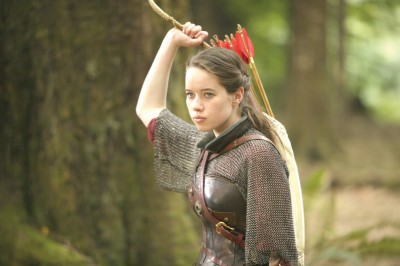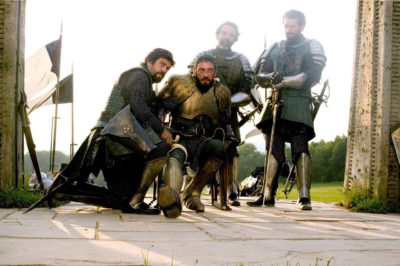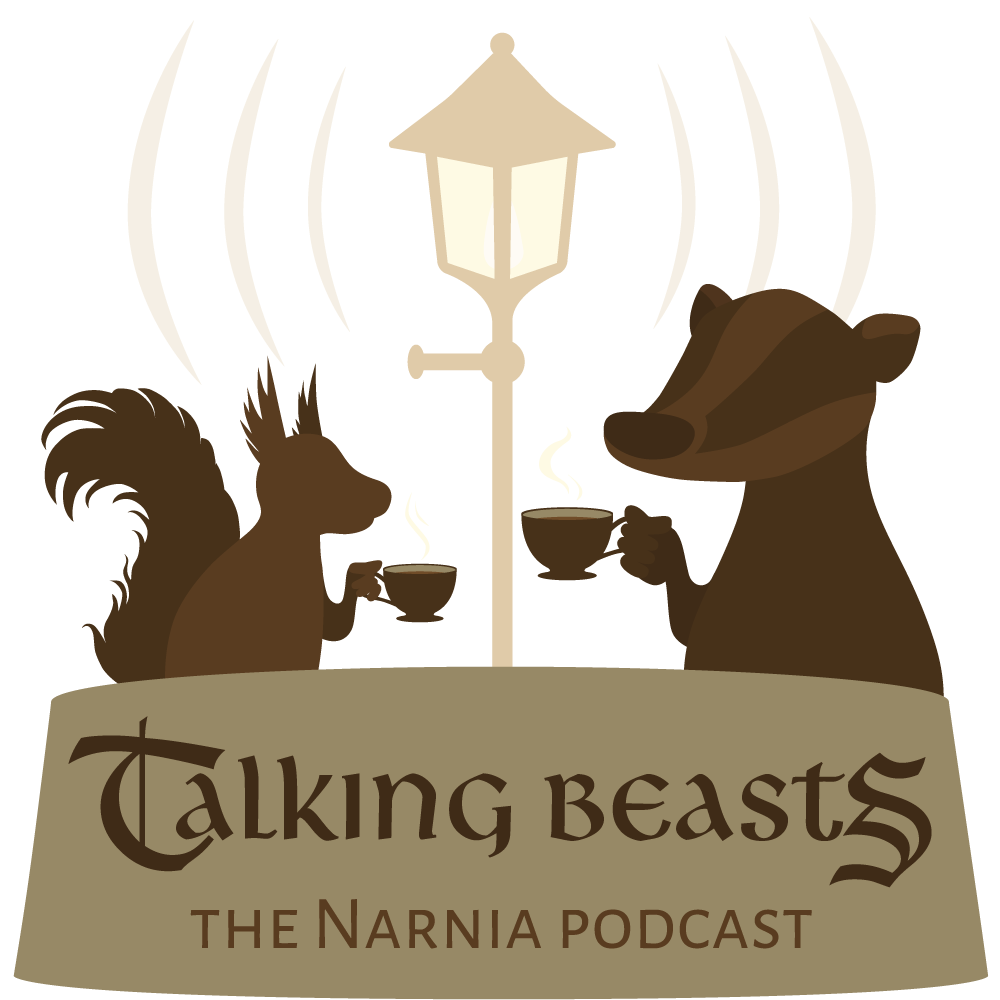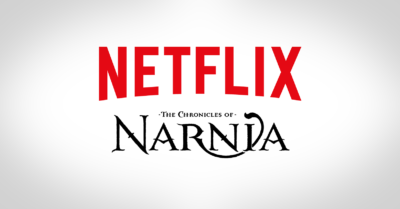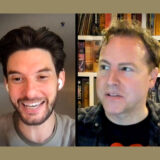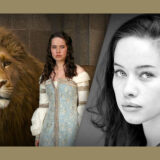NYC Interview Series: Andrew Adamson
Recently I (fantasia_kitty) had the opportunity to travel to New York City and attend a press junket with media outlets from around the world. After seeing the film, I was able to interview many of the members of the cast and crew. Over the coming days we’ll be releasing these interviews for your enjoyment. We’ll kick it off with Prince Caspian’s director, Andrew Adamson.
Meeting the director of a movie based on a series you love is a bit daunting, but Andrew Adamson was very laid back and ready to talk (albeit somewhat tired). Being able to probe the mind of the director and find out why he made the decisions he did on these movies was most interesting — from the relationships between Caspian and the Pevensies, to making decisions on the overall structure of the movie, Adamson’s replies made for an informative interview.
Well, the question was doing [Will and Anna’s] last scene, has anyone discussed in fourteen years from now whether or not there will be a movie seven? And whether they’ll walk back on?
AA: You know, it’s funny, obviously nobody knows. I think the studio will keep making them as long as people keep paying to come and see them. It’s actually interesting in that the end story probably wouldn’t be the last one to tell. Probably the first story would probably be the last one to tell, the prequel The Magician’s Nephew. And I know that Tilda would be more than happy to come back and do that. And it would be interesting because The Last Battle has a lot of challenges obviously. All of our children would be really grown up. And we did discuss, though not very seriously, shooting all their scenes sometime in the next few years, but I don’t think that’s going to happen.
So you think that they would do the creation of the world after the end of the world?
AA: I think so. I think it kind of makes sense really because then it becomes a kind of, “So that’s how all of this happened.” You’re telling a linear journey and then you go back and it’s somehow more satisfying — to go back to the beginning and after you finish telling the story.
The first film seemed to be a little more character-driven and this one seemed to be more action-driven…
AA: I hope it’s character-driven as well. [laughter]
It is, but there’s a lot more action in this one. Now is that going to be the trend for these films? Or are you going to try to incorporate both or what?
AA: I think you always try to incorporate both but in both cases they’re very much driven by the original story. This book was a bit more of a boy’s book. It’s centered around a young Prince. It’s centered around battles — human on human battles and human on creature battles, there’s a lot more danger. And from the time Caspian escapes the castle in the book he’s then fighting with Miraz throughout the whole time the Pevensies are traveling. So it is just kind of centered around that. There are things that we obviously expanded out, in the book Reepicheep suggests raiding the castle of the Telmarines. Not that they do, but I felt that that was something interesting and worth expanding, and sort of new imagery we hadn’t seen before. But really I think for me, I just tried to immerse myself in what book was and see what came out of that, and it just sort of evolved into what came out on screen.
Why was Lucy’s meeting with Aslan done as a dream sequence?
AA: Because there’s a problem… there’s something you can get away with in the structure of the book where a lot of it was told in retrospect, which is the fact that Aslan is there and doesn’t do anything. But I had a problem with that cinematically because once you show Aslan, if you don’t have him do something, it’s like, “Well, why is he letting all this happen?” It’s a good question to ask. And it became very hard to let your audience see this powerful omnipotent creature come along, hang out with the kids and not do anything to stop this carnage. So the way I wanted to bring Aslan into the story, I wanted to see the connection between him and Lucy, and I think all those things are important in the book. And it ends up being the best way to achieve that without having to explain why he wasn’t there. And there’s also the question of, “Was it a dream or not?” You know he repeats a line later on that he says to Lucy and I think that’s something I deliberately left to the audience to interpret themselves.
On some of the other changes, and most of them I really enjoyed. I mostly enjoyed the Caspian/Susan relationship that wasn’t there. One of the things I was really wondering about was that I remember, and it’s been a while since I read this and maybe you can correct me if I’m wrong, but in the book, Susan, when she was given her gift of the bow and arrows, she was told, “You’re not to be in battle,” if I remember that correctly. It seems kind of modernized.
AA: That was in the first one and I rejected it the first time through. [laughter] And I thought, “Well if she’s just going to make sandwiches then give her a plate and a knife.” [laughter] I think it was written in a different time and by somebody whose views I think evolved; by the time he wrote The Horse and His Boy he had a very different strong female character. But in the beginning of those stories, although Lucy was strong as a character, woman had to behave as girls. You know, they weren’t allowed to be more assertive, and that’s just something I don’t agree with. So I wasn’t going to make the movie like that. And I actually had a long discussion with Doug Gresham about this as well because when you start going away from an author’s viewpoint, is it the correct thing to do? And the way I justified it to him was that I think C. S. Lewis evolved after meeting Doug’s mother. And that’s why in the book, you see stronger female characters in the last books.
Belief versus doubt seems to be one of the major themes to it, and specifically in relationship to Aslan, not appearing really until the end of the movie. In the book he seems to be introduced a little bit earlier. What was your process in exploring that because it was really throughout the whole movie?
AA: You know, in the book it seems to happen pretty much within one scene in the gorge, when they’re following Aslan and one by one they get to see him. And I didn’t want to do it that way, largely because I felt like that would be a really long scene that wasn’t really that interesting because it’s really just walking through a gorge saying, “Do you see him? No. Do you see him?” [laughter] And I didn’t think that would work very well cinematically. So I really wanted to make it belief on so many levels. Belief in yourself, belief in Narnia, belief in acceptance of what… the thing with Susan, the idea for me was it’s better to have loved and lost than to never have loved at all. And that’s her relationship to Narnia you know. She has that line by the campfire when she says, “While it lasts.” So it was just this kind of general sense of them coming to terms with what has happened before, who they were, who Aslan was, coming to terms with their past, believing in Aslan and believing in their past. And then allowing themselves to let go and let things happen. Peter’s trying to control the whole thing. Susan’s trying to reject accepting the thing. Lucy’s the only one who stays relatively unwavering. In this movie much more than in the last her self-doubt was tested as well. That was a really indirect answer that opens up all these other issues that I haven’t talked about for a while.
Well Peter obviously is like, “Hey, we need to do something; we need to take care of it ourselves, basically just forget Aslan.”
AA: Yes, and I think the thing with him really is just wanting to relive his glory days. One of the things coming out of the last film, and when I read the book initially is he’s been king for 15 years and now he has to go back and do homework. I’m not going to adjust well to that. And so for Peter, it was a chance to reassert himself, a chance to prove himself again. So he doesn’t really want Aslan’s help because that would mean he needed somebody’s help. And he wanted to prove that he was the High King and therefore he was the last to come around to actually saying, “Ok, I need help.”
Coming back for a second installment of Narnia, how did you want your audience to reconnect with Narnia, even though it’s been 1300 years since the four children have come back, and what kind of challenges did that pose?
AA: I think we’re given a huge leeway in connections with our kids. One of the things I found in one of the early test screenings was that when the Pevensies come on, the audience was just really happy to see them. That made it really easy to connect the movies because the worlds are very different. At the same time I was trying to create somewhat of a disconnection if you know what I mean. The thing to me — and I related to this on a personal level — I grew up in Papua New Guinea when I was 11 to 18. And the country has gone through an awful lot of change in the last 22 years. And I’ve never gone back there partly because I know the place I grew up doesn’t really exist anymore. There’s a lot of conflict, there’s curfews, there’s violence. When I grew up there I was very free, I’d jump on my motorcycle and ride off into the bush without coming to any harm. So I sort of related to the sense of loss, of not being able to go back to something you grew up with. And I realized also that you can’t get back to your childhood, and that’s really what these kids are going through, going back to a place that no longer exists and having to accept that and move on. So as much as I wanted the connection, I wanted the audience to feel that sense of loss as well.
On the theme of change, this film exemplifies great change. In your estimation, what character has to make the greatest change from the beginning of the film?
AA: That’s a good question. I think Peter actually. I think because he’s going from a High King… I mean the scene when he hands over his sword to Caspian, I think is the biggest kind of change. He lived for 15 years as this High King, conquering the giants, all those kind of things. And now he has to pass that on and accept that he’s going to go back to being a schoolboy. It’s pretty hard to take.
Going back to the action, it wasn’t exceedingly, overly graphic in its violence, but it seems to be non-stop. And I’m thinking maybe 20 years ago, maybe there would have been cause to tone it back a little bit. Do you think the audiences are more accepting of that or want more of that visceral look now?
AA: That’s a really hard question too. Certainly when you see movies like 300 the audience is exposed to a really fast-paced, visual action on every level.
But that’s adults, there’s going to be a lot of kids…
AA: There are kids and obviously we’re sensitive to that and we went through with the MPAA and so on. There were things I took out on my own, after seeing it with a younger audience, and then from when the MPAA had seen it, we toned back some stuff that we thought, “Ok, maybe this has gone too far.” Largely for me seeing it with kids. I mean, when you sit down and you’re watching it, and you see the kids’ faces while making the film, you’re just making an attempt, you’re making it exciting, you’re doing all of these things because you’re essentially making the film for yourself. When you start showing it to an audience, that then influences how you feel about the film. I had a similar thing with the first Shrek movie with some of the humor that was a little bit adult and I started watching the film and I was sinking down in my chair. [laughter] So there were definitely some things we were cutting back because of that. In some cases it’s the duration of the intensity. I don’t have any problem with children being scared… let me rephrase that. [laughter] I think children like to be scared, they like intensity, they like being on the edge of their seat, they like to be biting their nails as long as you let them off at some point. I think if you keep it going for too long at a certain intensity then it can become traumatizing. And it can be as simple as sometimes letting the sound drop away and playing music. So you’ll be in the moment and then by being taken out of it, you don’t feel beaten up by the intensity. But that’s really the balance I kind of try to find.
Were you under instructions to make a PG movie?
AA: Yes, we always intended to make a PG movie.
Some of us were talking earlier about the final battle sequence in which they take the pillars out of the tunnels. Was there any sacrificial suicide going on there?
AA: No, it was really just that when we started the previsiualization (I always previsualize before I start writing), we were previzing that scene and we got to this point where we were like, “Ok, here we are again on the final battlefield with an army on each side charging at each other” and I thought, “We’ve got to do something else, I’ve seen this so many times.” And then we started talking about the How, “Well we’ve got this underground, what can we do with an underground?” And then from there came the idea, “Well, we’ve got this whole battlefield that’s suspended on a parking lot effectively, like an underground system.” And it just sort of evolved from that point, like, “How can we find something new and interesting and different?” And that’s what it evolved into. No deeper meaning than that I’m afraid to say, I just thought it was cool.
Humor seemed to be a big aspect in this film and I think that probably relates to some of the intensity. I guess talk a bit more about that, like Reepicheep and the kids, and the interaction. I guess it seemed like a greater attempt at humor.
AA: It’s an attempt. Thank you. [laughter] No, you know, I don’t know if it was thought out. I was actually really pleased the first time I saw it with an audience and I was surprised at how much they laughed, and they laughed at things I didn’t even think were that funny — which is a good sign because it shows a lot of love for the characters. Again I think it just sort of evolved that way. I think there was more opportunity within the book, I mean Reepicheep is a great characters in the book. In Dawn Treader he’s even better, he’s expanded further. He’s a character that I think subconsciously I based Puss ‘n Boots pretty heavily on. So immediately you put Eddie Izzard in a mouse and you know whatever he says is going to be funny. Trufflehunter I think is a very charming character and he gets a lot of humor just from how sincere he is. I like humor and obviously I come from many films where I enjoyed humor. I enjoy taking an audience to a place of tension and then letting them off with humor. I enjoy the fact that humor can undercut things that are over-sincere or saccharine. So I try to inject it where it’s appropriate and can come from the character.
How involved are you on the third film?
AA: In the last couple of months, not very involved [laughs]. But no, pretty involved. I’ve been working with them intensely getting the script put together and so on. Obviously in the last month or two I’ve withdrawn from that to finish this film but then we’ll be getting back into it again pretty soon.
And if you haven’t had enough reading already, check out TheDeadBolt’s interview with Andrew Adamson.
Podcast: Play in new window | Embed


